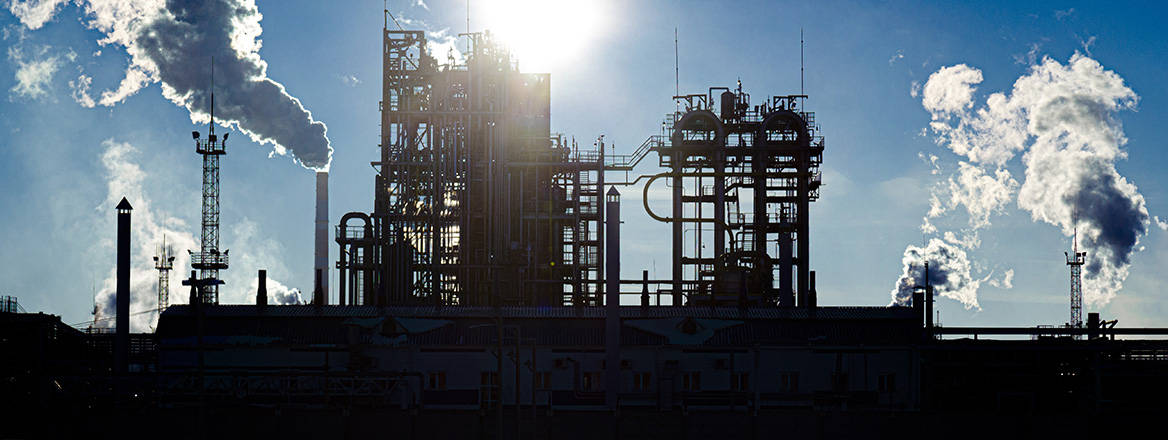Bracing for the Hardest Winter: Protecting Ukraine’s Energy Infrastructure
Russia has caused immense damage to Ukraine’s energy infrastructure and will aim to expand its success as a source of leverage to end the war. This can be prevented through the focused provision of air defence.
Russia has steadily eroded what little advantages Ukraine has fought hard to create. It has done this by focusing on two key combat strategies. The first is frontline attrition and sustained pressure along the front, with limited actions to retake cities and towns that are considered important to Russia’s overall objectives. The second is attacks on Ukraine’s energy infrastructure, which have been accompanied by a concerted effort to deplete Western and Ukrainian stocks of air defence missiles. Because of this, Russia’s strikes against Ukraine’s energy infrastructure have grown in efficacy, and are now in danger of achieving the Kremlin’s goal of a total blackout in Ukraine.
Ukrainian society will cease to function effectively without power; many services like public transport and hospitals will find it almost impossible to continue safely. As winter approaches and temperatures drop below freezing, the lack of power and heating will become life-threatening for the elderly and young, driving internal and external displacement. Russia’s goal is to destroy Ukraine’s will to fight, such that the irrational demands Putin frequently makes will begin to seem palatable compared with continued suffering. This is why the West must act now to defend and restore Ukraine’s energy infrastructure. The alternative is a defeated Ukraine, and an emboldened Kremlin that feels as though it has won a great victory over the West.
Impressive Accuracy
At 1:35 am on 22 March 2024, five Tu-95MS strategic bombers took off from Russia’s Olenya airbase. They would be joined by eight more from Olenya and Engels by 2:15 am. Each accelerated away from their runways with wings and load bays full of cruise missiles. Between 3:45 and 5:12 that same morning, eight MiG-31K fighter aircraft took off in waves of two or three from the Savasleyka airfield in the Nizhny Novgorod region, each carrying a Kh-47 Kinzhal hypersonic missile. These aircraft were joined by 9K270 Iskander launchers in Belgorod and Crimea with 9M270 ballistic missiles ready to fire. The strike force was completed by S-300 units, normally dedicated to air defence, which prepared their missile launchers for another wave of strikes against Kharkiv. Russian units in the Crimea and Krasnodar regions began organising more than 60 Shahed-136 attack drones to launch in waves that would add the haunting sound of their engines to the unfolding terror.
At 4:00 am, the Ukrainian Air Force issued air raid warnings for most of Ukraine, urging the population to seek shelter. Then it reported the approach of Russian missiles: a ballistic missile threat to Kharkiv from Belgorod, a missile fired at Kremenchuk, and the take-off of more MiGs. At 4:10 am, the head of the Zaporizhzhia regional military administration reported eight explosions. At 5:28 am, at least 16 missiles were approaching Ukraine’s air space at once, with at least 10 more were reported at 0553. The air raid was over by 7:06 am, and citizens of Kharkiv not already awoken by the sirens and sounds of missile impacts found that they were without electricity and running water.
Russia’s strikes against Ukraine’s energy infrastructure have grown in efficacy, and are now in danger of achieving the Kremlin’s goal of a total blackout in Ukraine
Russia had launched its largest single strike against Ukraine’s energy infrastructure since the start of the war. The Ukrainian Air Force reported 151 missiles and drones; it had intercepted 55 of the 63 Shaheds and 37 of the 88 missiles that were fired. The engagement was focused on Ukraine’s energy infrastructure, with an emphasis on those power plants supporting the Kharkiv region.
Winter is Coming
The Smiivska thermal power plant on the outskirts of Kharkiv was almost destroyed, while the CHP-5 thermal power plant was too badly damaged to continue operating, forcing Kharkiv to draw on electricity from other regions of Ukraine. The attack’s impact was made even more painful as repairs of the Smiivska plant had only recently been completed following previous strikes. The heating season in Kharkiv was ended prematurely as a result; fortunately, it was a warm spring. Russia had targeted Ukraine’s power generation as well as its distribution networks, which led to a 50% drop in capacity for the Kharkiv region. The mass strikes continued unabated, and the Ukrainian company Centrenego reported that 100% of its generation capacity had been destroyed by mid-April.
The Russian concept for these strikes is known as a Strategic Operation for the Destruction of Critical Infrastructure (SODCIT). Russia has conducted this type of operation from day one of the invasion, but Ukraine was able to rebuild using aid from the West and the equipment it had available domestically. However, none of the previous attacks were as successful; the CEO of one energy company, DTEK, remarked that the accuracy of Russian missiles was impressive, and that where previous strikes had landed within 100–200 m of their target, they were now striking within one metre. Sadly, Ukraine’s air defence availability has declined as Russian efficacy has increased.
As a result, Russian strikes had cumulatively destroyed 9 gigawatts (GW) of Ukraine’s domestic power generation by mid-June 2024. Peak consumption during the winter of 2023 was 18 GW, which means that half of Ukraine’s production capacity has been destroyed. At least 80% of Ukraine’s thermal power and one third of its hydroelectric power generation has been destroyed. Most recently, Russia has continued targeting the remaining hydroelectric power stations, and has even targeted the substations linked to solar farms. The remaining facilities that can generate power include the hydroelectric power plants in Dniester, Kyiv and Kaniv. The Zaporizhzhia nuclear power plant remains functional, but it would be possible for Russia to target the substations that distribute its power. Ukraine can import around 1.7 mWh from Europe, but expanding this is challenging and would require significant investment in Ukraine’s power infrastructure.
It is important to understand what this means for the average Ukrainian. Most Ukrainians already experience daily blackouts, and backup power storage is common in many homes. This is manageable in the summer, but Ukraine relies on thermal power plants to generate heating for homes as well as power during its long winter months. Thermal plants are important because they can respond to surges in demand by increasing capacity; nuclear power plants cannot. There are already estimates that 20-hour blackouts will be imposed in winter. Temperatures regularly drop to –4 degrees, which will likely drive an influx of refugees including women, children and the elderly towards Europe’s borders if heating and power cannot be restored. This is one desired outcome of a SODCIT; it pressures the opponent’s population and is designed to encourage them to end the fight by making daily life unbearable.
Defend and Restore
Ukraine’s situation will become untenable if this trajectory continues. A country cannot survive without power, and Russia is on course to endanger or destroy everything that powers Ukraine. A solution to this challenge is well within the gift of Western powers, and has two strands: defend the infrastructure that remains, and restore what has been damaged.
Defend
Ukraine requires more air defence. This is not a new problem; however, in this scenario, the problem is potentially less complex than affording air defence to all of Ukraine. The current demand is to protect Ukraine’s remaining power infrastructure, which now relies on five key sites. This means that resources can be focused in both space and time to maximise their efficacy against Russia’s attacks. Eventually, Ukraine will also require protection for its damaged infrastructure during the repair process, which may take more than a year for some of the power plants.
A layered approach to air defence is key. Additional long-range systems – such as the US Patriot or French/Italian SAMP-T and missiles that have already been promised – will help, but they are not expected to arrive until winter, which will be too late. Additional launchers and missiles for mid-range assets such as IRIS-T, NASAMS or Hawk are all needed, as has always been the case. In the short term, the most feasible option is to enhance short-range capabilities through anti-aircraft cannons and man-portable air-defence systems, such as the Gepards that have been donated by Germany and the FIM-92 Stinger respectively. However, even towed systems coupled with air defence radars such as the Flycatcher air defence system that is in service in the Netherlands would provide cost-effective defence against Shaheds and some cruise missiles. In addition, Ukraine would benefit from new supplies of radars and other sensors to help interpret the direction and intent of Russian attacks. Cruise missiles and Shaheds fly circuitous routes that make predicting their ultimate destination difficult. Ballistic missiles like those fired by the Iskander and the Kinzhal move quickly and deploy decoys to complicate interception. Often, Russia will aim to land all its missiles and drones close together, which is designed to overwhelm air defenders. The more data that Ukraine can gather on the nature and route of Russia’s attacks, the easier it will be to anticipate them and conduct successful interceptions.
A country cannot survive without power, and Russia is on course to endanger or destroy everything that powers Ukraine
Russia likely feels that it has made good progress in the war over the past eight months, and with several key events such as the NATO summit and elections in the US, UK and France approaching, it is unlikely to relent and allow its advantage to slip away.
Restore
The defence of Ukraine’s existing infrastructure must be addressed before restoration is carried out. Russia has not exhausted its missile stocks; instead, it has increased production of existing and novel systems, which has led to greater depth in its stockpiles of key missiles. This means that further strikes will happen, and they will be effective if Ukraine’s air defences around the five remaining sites, and those plants it chooses to repair, are not properly resourced.
Ukraine is already working to repair its infrastructure and to restore as much capacity as possible. However, it is estimated that there will be at least a 35% deficit in capacity come winter. Russia’s 2022 campaign to destroy Ukraine’s energy infrastructure is estimated to have damaged close to 50% of its capacity. The affected power stations were repaired and returned to service in 2023. Europe and Ukraine have therefore demonstrated their ability to cooperate and resolve an energy crisis once before. Ukraine’s energy providers are experienced in restoring power as a result, but their efforts will be in vain if Western allies are not able to protect what they rebuild.
The views expressed in this Commentary are the author’s, and do not represent those of RUSI or any other institution.
Have an idea for a Commentary you’d like to write for us? Send a short pitch to commentaries@rusi.org and we’ll get back to you if it fits into our research interests. Full guidelines for contributors can be found here.
WRITTEN BY
Sam Cranny-Evans
RUSI Associate Fellow, Military Sciences
- Jim McLeanMedia Relations Manager+44 (0)7917 373 069JimMc@rusi.org



